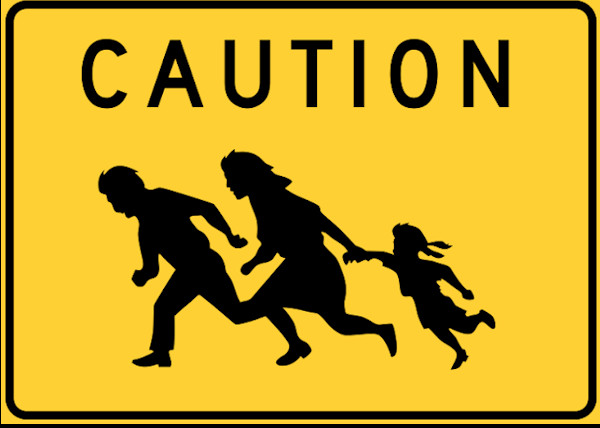Mired in Controversy, ‘American Dirt’ Is a Gripping Story of a Family’s Perilous Journey

American Dirt
By Jeanine Cummins
Flatiron Books
400 pages
Jeanine Cummins’s novel, American Dirt, appeared early in 2020, drawing initial excitement and laudatory reviews. Soon, the book came under attack, with accusations and recriminations revolving around the issue of cultural appropriation. Critics questioned Cummins’s legitimacy and ability to write a novel about a Mexican mother and child on the run from a vicious drug cartel. Protests followed and a host of publicity events and television appearances were canceled.
The negative response to her novel created a pre-pandemic uproar that seemed to take everyone by surprise. It was a simpler time.
Issues of cultural appropriation aside, how does American Dirt fare as a novel? The short answer is: impressively well. From the first sentence (“One of the very first bullets comes in through the open window above the toilet where Luca is standing.”), the story moves forward with propulsive speed. Lydia Quixano Pérez and her 8-year-old son are the only survivors of a mass killing at a quinceañera in Acapulco that takes the lives of, among others, her mother and her beloved husband, Sebastián. He had written articles critical of an emerging cartel, Los Jardineros, and retribution is swift and brutal.

It’s quickly clear that police arriving at the gruesome crime scene aren’t necessarily trustworthy:
“In fact, of the more than two dozen law enforcement and medical personnel moving around Abuela’s home and patio this very moment, marking the location of shell casings, examining footprints, analyzing blood splatter, taking pictures, checking for pulses, making the sign of the cross over the corpses of Lydia’s family, seven receive regular money from the local cartel … The others do nothing, because that’s precisely what the cartel pays them to do, to populate uniforms and perform the appearance of governance.”
Within hours, Lydia and her son Luca are on the run. Their best hope for surviving a further attack from Javier Crespo Fuentes, head of the cartel, lies in a harrowing journey to el Norte (specifically, Denver, Colorado, where relatives live). Getting there proves to be exceptionally difficult and, at almost every turn, life-threatening.
Long before the horrendous executions, Lydia rather improbably meets Javier (el jefe) in the bookstore she owns in Acapulco. The two hit it off and develop something of a fond relationship (at first, she’s unaware of who he is). Now she understands that Javier “was a vicious mass murderer who mistook himself for a gentleman.”
This relationship is one of the few implausible elements in a riveting story.

During their odyssey to the U.S., mother and child repeatedly take their lives in their hands by illegally boarding La Bestia, a freight train favored by migrants attempting to flee north. They risk everything by jumping from a platform onto a moving train:
“Luca jumps. And every molecule in Lydia’s body jumps with him. She sees him, the tight tuck of him, how small he is, how absurdly brave he is, his muscles and bones, his skin and hair, his thoughts and words and ideas, the very bigness of his soul, she sees all of him in the moment when his body leaves the safety of the overpass and flies, just momentarily, upward because of the effort of his exertion, until gravity catches him and he descends toward the top of La Bestia. Lydia watches him drop, her eyes so big with fear they’ve almost left her body.”
The prose in American Dirt is clear and straightforward, keeping us grounded throughout Lydia and Luca’s perilous journey. Only occasionally do small literary flourishes fall short (“Lydia funnels gratitude into the slow blink of her lashes”). This isn’t a story that requires full-blown flights of lyricism, but instead matches language to plot in a way that feels organically whole. We are right there with Lydia and Luca as they attempt, against all odds, to escape into a new and better life.
Author Bio:
Lee Polevoi, Highbrow Magazine’s chief book critic, is the author of a novel, The Moon in Deep Winter.
For Highbrow Magazine
Image Sources:
--Flatiron Books (Macmillan)
--J. Kennedy (Flatiron Books)
--John Hood (Wikimedia.org, Creative Commons)




























































































































































































































































































































